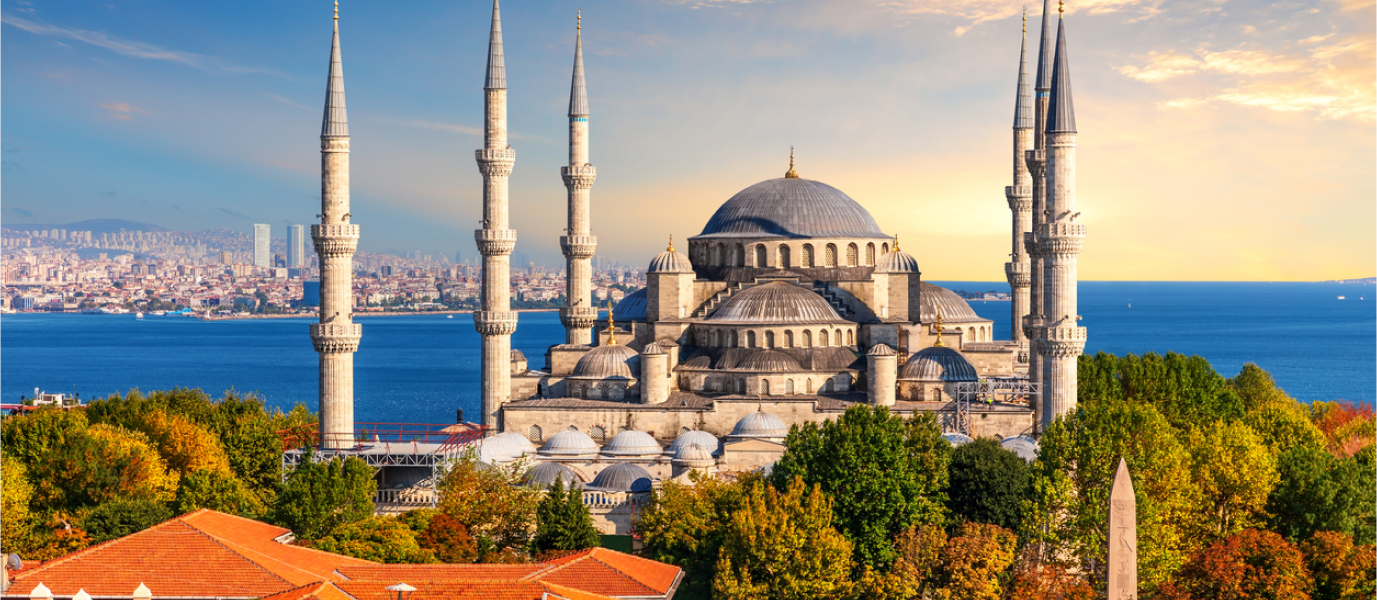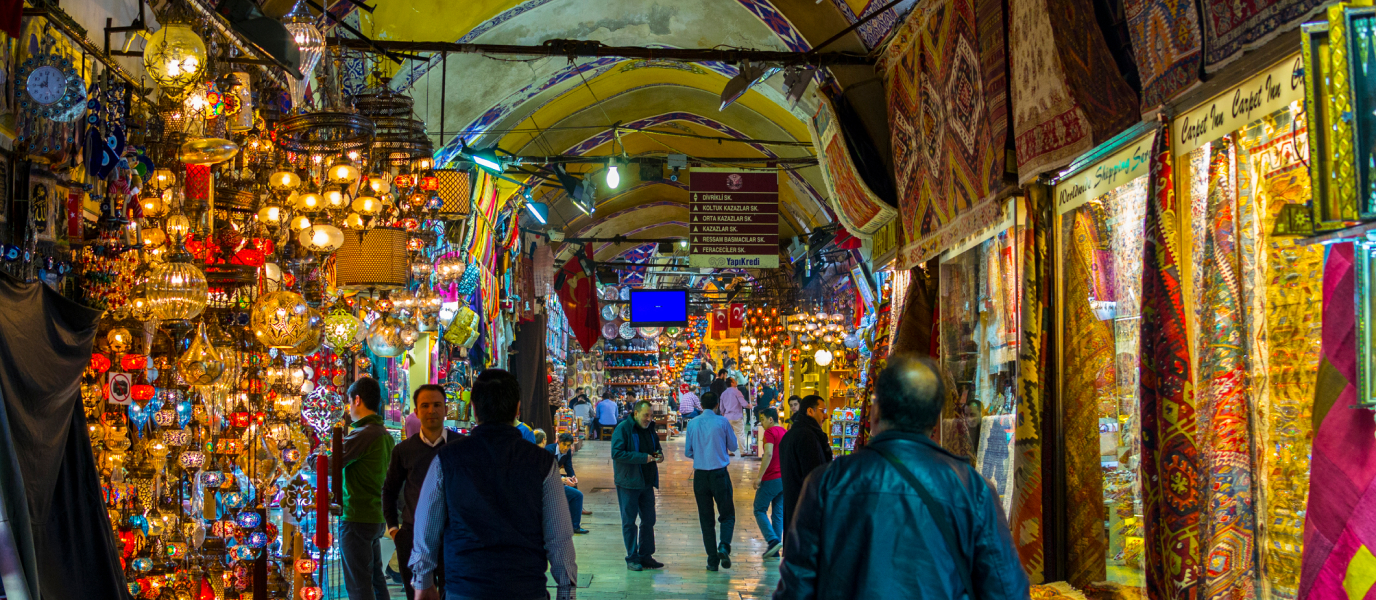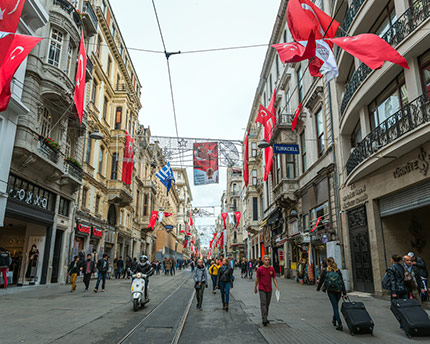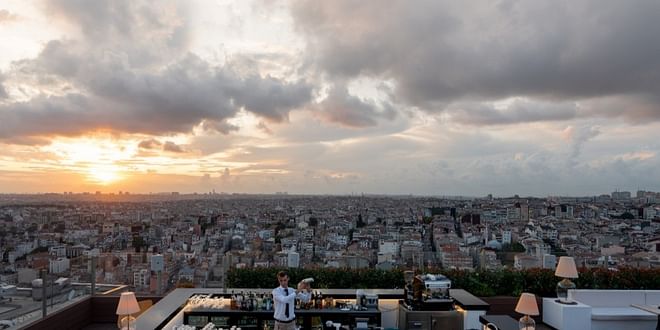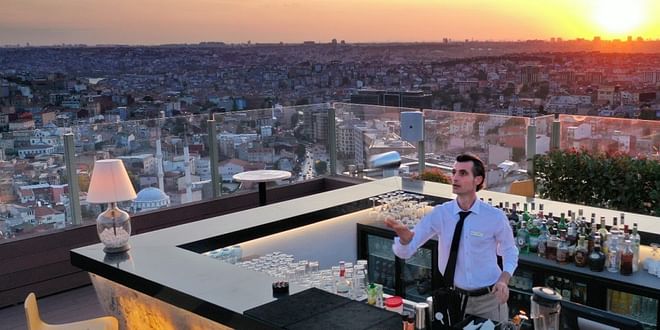On the banks of the Golden Horn, on the southern end of Galata Bridge, Istanbul’s New Mosque signals to us that we have arrived in the historic quarter of the city, the current Fatih district. Ordered by two women, both wives and mothers of succeeding sultans, the mosque was named in honour of the first of them and christened Yeni Valide Sultan Camii, the New Mosque of the Sultan’s Mother.
The New Mosque was built at the height of the Ottoman Empire’s expansion and splendour. Its architect followed the ideas of the great engineer and greatest exponent of classic Ottoman architecture, Mimar Sinan. He combined the empire’s diverse styles or schools, merging them with influences from other cultures such as that of Byzantium, in colossal, beautiful buildings that took advantage of light and conveyed a sense of opulence. Buildings such as the Sehzade Mosque, also by Sinan, and the Blue Mosque, by another one of his apprentices, served as inspiration for the New Mosque.
As part of a complex, or külliye, the New Mosque also boasted a large portico courtyard and a fountain for ablutions. What’s more, it contained a hospital, a school, a palace and, of course, a mausoleum with the tombs of various sultans and members of their courts.
The history of the New Mosque: an almost forgotten project
Construction of the New Mosque first began in 1597. It was then that Safiye Sultan, the wife of Murad III and mother of Mehmed III, commissioned Davut Ağa, an apprentice to the legendary Sinan, to design the building. The Valide Sultan (queen mother) decided to build the mosque in the Jewish quarter in order to extend the influence of Islam among the Jewish population. To do so, several buildings in the neighbourhood had to be demolished in order to make room for the vast complex. Many believed that this was nothing more than an excuse for confiscating their properties.
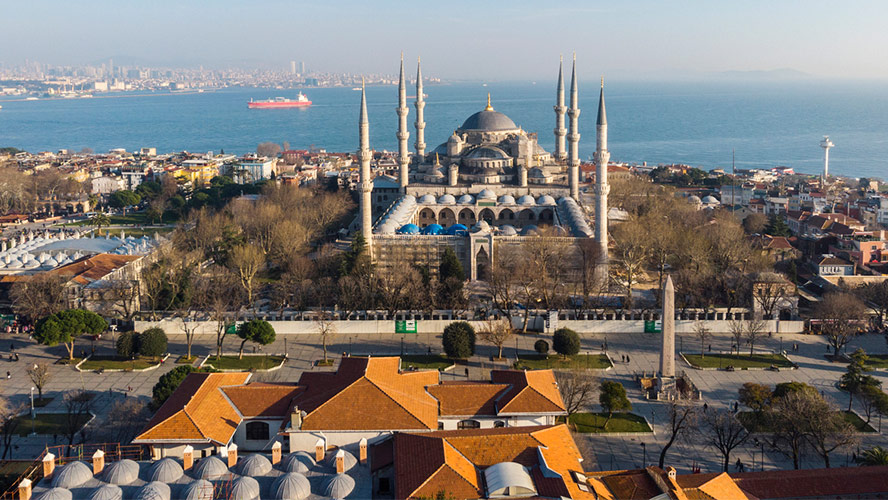
The New Mosque, however, never came to be completed. While the high costs and its out-of-the-way location drew sharp criticism, the Janissaries – the elite troops of the Ottoman Empire and the first standing army of the modern era – were wary of the political power of Safiye. Upon her son’s death, Safiye was forced into seclusion at the Old Palace (Eski Saray) and the new sultan, Ahmed I, decided to abandon the construction. He instead had a more ambitious project in mind, the Blue Mosque, for which he would be remembered.
After 1603 the New Mosque (or what had been built of it) fell into ruins and its structure was then destroyed in the Great Fire of 1660. In the wake of the fire, the imperial architect Mustafa Ağa suggested to the mother of the sultan Mehmed IV that she complete her predecessor’s project, with a gesture of devotion towards the heavens. Only in this way could the moral of an almost destroyed city be lifted. And, once again, a woman, the Valide Sultan Turhan Hatice, was responsible for breathing new life into the New Mosque.
In 1663 mosque was finally completed and renamed the New Valide Sultan Mosque (Yeni Valide Sulan Camii) its full title. The imperial mosque was the first to be ordered by a woman. In this case, two women, separated by almost half a century. This period would later be known as the Sultanate of Women due to their ever-growing involvement in the government of the empire. Turhan Hatice marked the end of almost 100 years of profound female influence in the history of Islam.
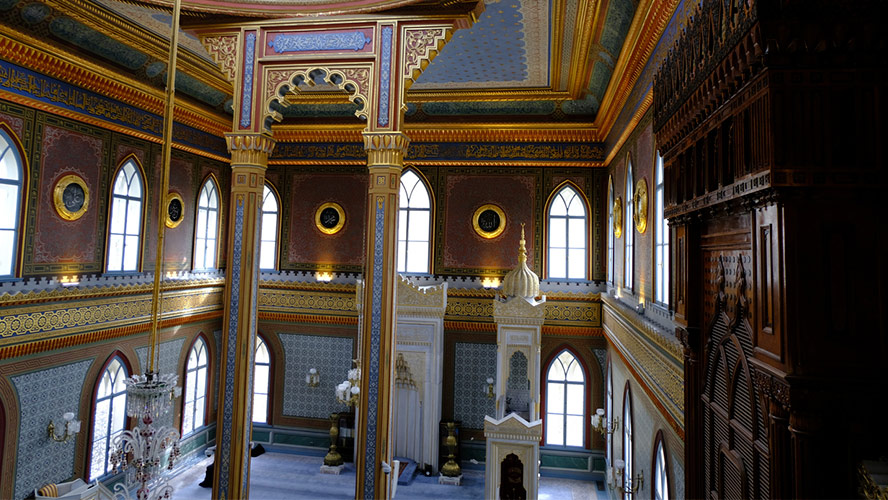
Architecture, interior and the mausoleum
The New Mosque, on the banks of the Golden Horn, is still a fantastical sight, surrounded by geometric gardens and squares. In its day it was situated on the outskirts of central Sultanhamet and Istanbul, while today it benefits from the large numbers of tourists and families that come to enjoy the parks and surrounding area.
On the outside there are two minarets pointing up to the sky and, much like in other examples of Byzantine and Ottoman architecture, such as the Hagia Sophia and the Süleymaniye Mosque, many domes. Up to 66 crown the Safiye Mosque, increasing in size in waves until the enormous central dome, which has a height of 36 metres. In this case, four semi-domes surround it, helping to support the main dome’s weight. The dome plan, designed by Davut Ağa, is based on the ideas of his teacher, Sinan. His vision of Ottoman architecture was based on open spaces, uninterrupted by columns or other similar features such as in the Hagia Sophia.
The first thing you cross when you enter the New Mosque is its portico courtyard, the space dedicated to ablutions. As in many other cultures, including Christianity and its baptism tradition, water for Muslims represented purification, the most vital liquid of all. Before saying their prayers, they would purify their bodies here in the courtyard, which is why you will see in the centre an octagonal fountain with diminished arches topped off by a dome. The fountain is purely ornamental, however, and the taps found on the mosque’s southern wall are instead used for this purpose. The courtyard is also surrounded by a colonnade of elegant, slightly-pointed arches covered with vaulted dome ceilings.
Beneath the entrance porch, the façade of the New Mosque is decorated with Iznik tiles, which were used by Sultan Ahmed I in the Blue Mosque, giving it its distinctive colour. Once you cross the threshold, the dome ceilings, as is common in the city’s mosques, create a space that blends a sense of magic with spirituality, and solemnity and religiosity with fantasy as part of the decoration.
The külliye or the complex to which the New Mosque belongs, was designed at the request of the Sultana Turhan Hanice, who decided to add a hospital, a school and a palace. She also installed a mausoleum housing tombs for her son Mehmed IV and for herself, to which those of another five sultans would subsequently be added. The mausoleum is one of the most important in the city, together with others such as that of the Fatih Mosque and the Süleymaniye Mosque.
The Spice Bazaar, on the same complex as the mosque
The Spice Bazaar, which is part of the külliye of the New Mosuqe, offers you a chance to soak up the hustle and bustle, the exotic aromas and the colours of eastern markets. Here you will find typical products such as pul biber (a Turkish or Aleppo chilli pepper), safflower plants, sumac (a sour, fruity spice that can be used as a substitute for lemon and has antioxidant properties) and Turkish saffron, among others.
The Spice Bazaar has six different entrances and is situated on the side of the New Mosque that is opposite the Golden Horn, forming an L-shape. It houses over 85 shops specialising not only in spices but also sweets, jewellery, dried fruits and nuts, and traditional Turkish items, souvenirs and crafts. In short, somewhere to connect with the tradition and gastronomy of the city. Walking through its galleries, under the slightly-pointed, vaulted ceiling, it is easy to imagine the splendour and luxury in which the Sultana Turhan Hanice wanted to envelop the empire’s people at the time. The aromas of herbs and spices, the contrast of vivid colours, the hustle and bustle… All of it adds up to make an extra special atmosphere.
Pine nuts, turmeric, Turkish saffron as well as Iranian (the best in terms of quality), tea, cinnamon, fenugreek… We recommend that you look around and find the best deal, because although the prices are slightly higher than traditional shops, the quality is excellent and you can always haggle, If you prefer to resist the temptation to shop, the Spice Bazaar is still a must-see place for those visiting the New Mosque. An experience for the senses and a different way to appreciate the eastern charm of these types of markets.
























































